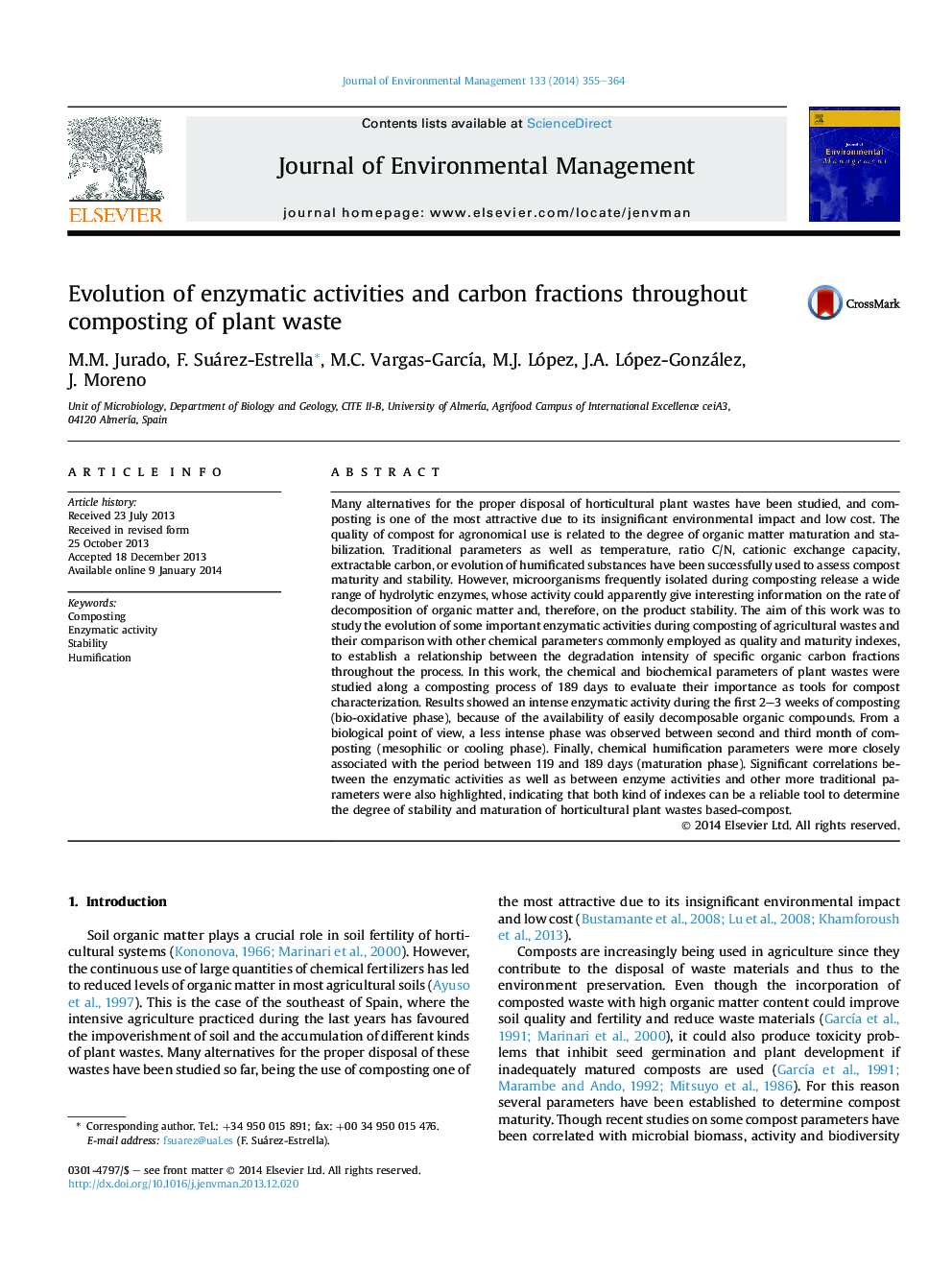| کد مقاله | کد نشریه | سال انتشار | مقاله انگلیسی | نسخه تمام متن |
|---|---|---|---|---|
| 1055855 | 1485279 | 2014 | 10 صفحه PDF | دانلود رایگان |
• Enzymatic and temperature patterns registered inside the pile are directly related.
• Enzymatic activity reaches its peak during the first days of the composting process.
• When piles begin to cool, the enzymatic activity decreases noticeably.
• The intensity of the enzymatic activity indirectly affects the humification process.
Many alternatives for the proper disposal of horticultural plant wastes have been studied, and composting is one of the most attractive due to its insignificant environmental impact and low cost. The quality of compost for agronomical use is related to the degree of organic matter maturation and stabilization. Traditional parameters as well as temperature, ratio C/N, cationic exchange capacity, extractable carbon, or evolution of humificated substances have been successfully used to assess compost maturity and stability. However, microorganisms frequently isolated during composting release a wide range of hydrolytic enzymes, whose activity could apparently give interesting information on the rate of decomposition of organic matter and, therefore, on the product stability. The aim of this work was to study the evolution of some important enzymatic activities during composting of agricultural wastes and their comparison with other chemical parameters commonly employed as quality and maturity indexes, to establish a relationship between the degradation intensity of specific organic carbon fractions throughout the process. In this work, the chemical and biochemical parameters of plant wastes were studied along a composting process of 189 days to evaluate their importance as tools for compost characterization. Results showed an intense enzymatic activity during the first 2–3 weeks of composting (bio-oxidative phase), because of the availability of easily decomposable organic compounds. From a biological point of view, a less intense phase was observed between second and third month of composting (mesophilic or cooling phase). Finally, chemical humification parameters were more closely associated with the period between 119 and 189 days (maturation phase). Significant correlations between the enzymatic activities as well as between enzyme activities and other more traditional parameters were also highlighted, indicating that both kind of indexes can be a reliable tool to determine the degree of stability and maturation of horticultural plant wastes based-compost.
Journal: Journal of Environmental Management - Volume 133, 15 January 2014, Pages 355–364
